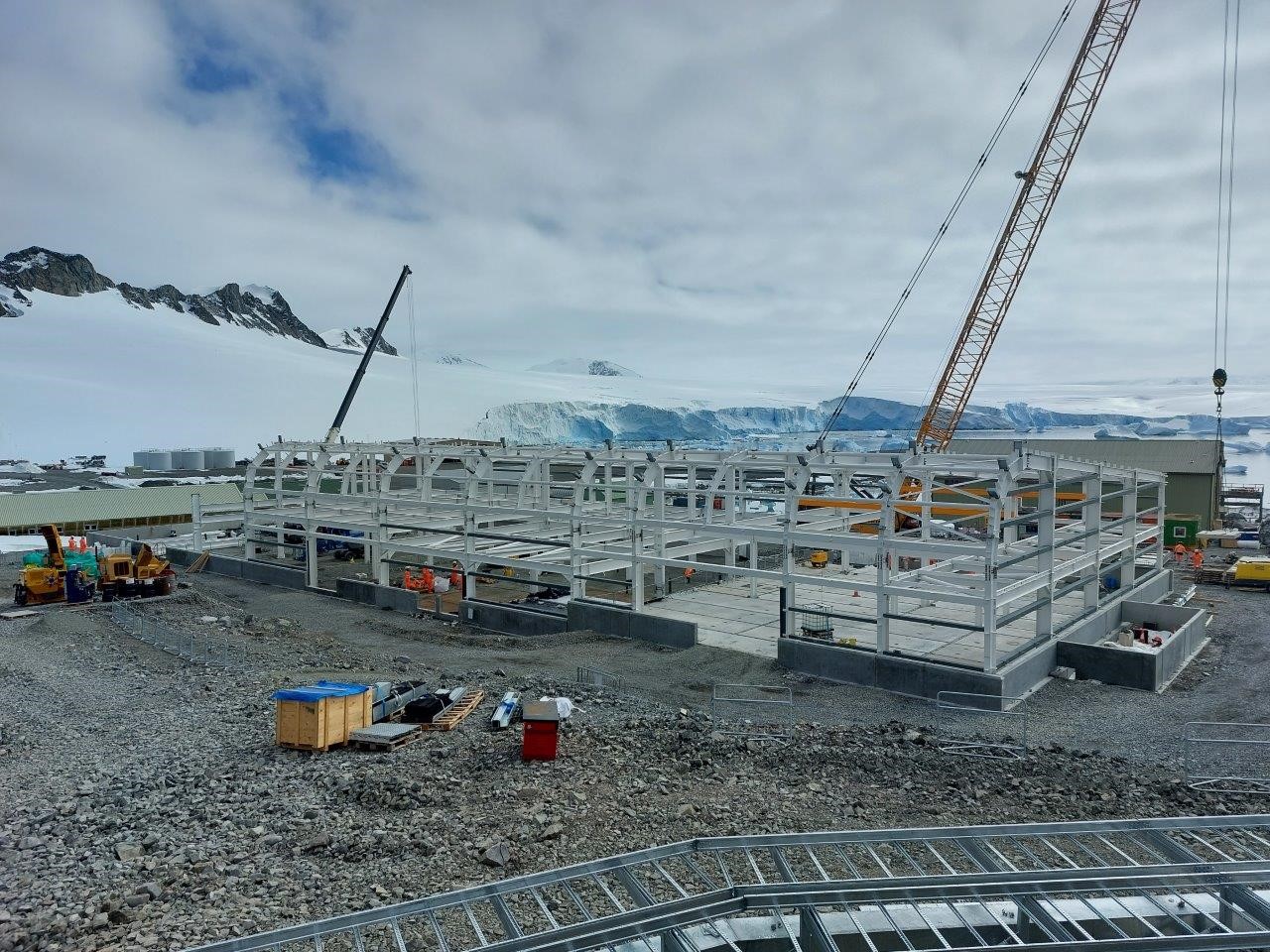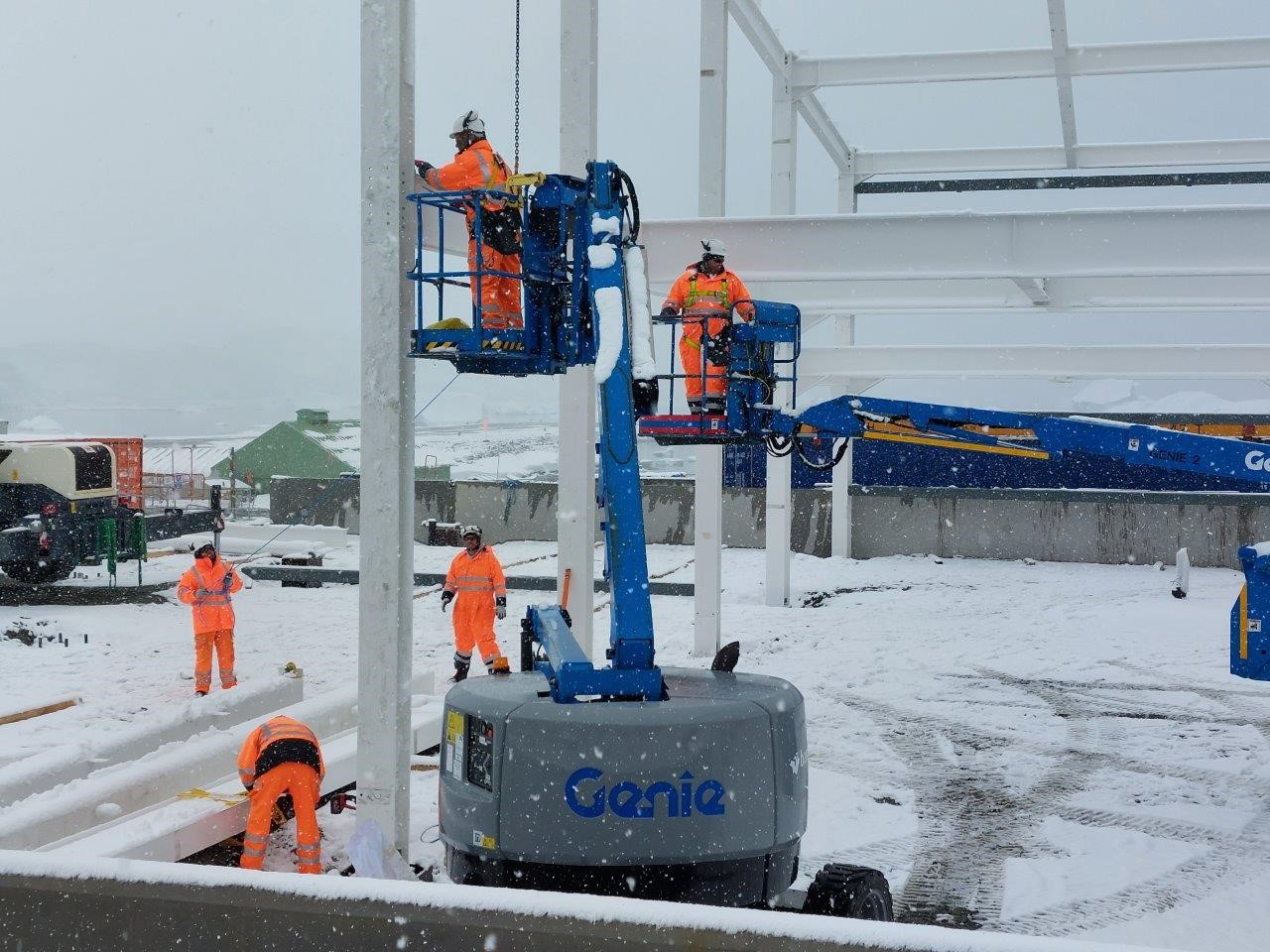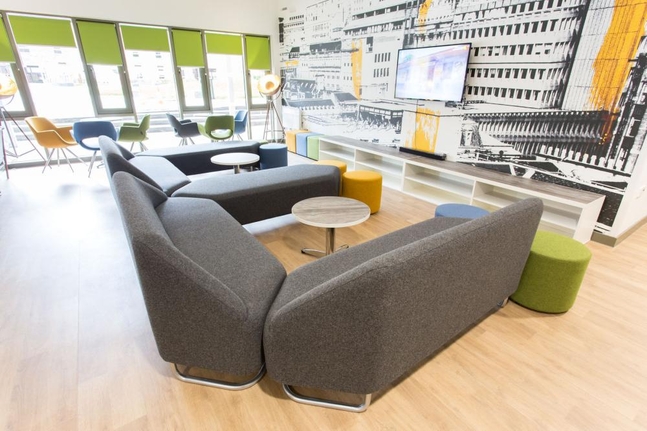
SCOTLAND is playing a key role in the build of a state-of-the-art communications tower for the British Antarctic Survey (BAS).
The five-year project will see the tower form part of the Discovery Building at the Rothera Research Centre in Antarctica, which will help aid scientific work focused on weather and climate conditions in the peninsula.
Led by BAM, a series of Scottish contractors have been involved in the project.
A trial build was undertaken in Kintore, Aberdeenshire, and health and safety training was moved from BAS’ Cambridge base to Polmont, in order to accommodate the Scottish-heavy element of the workforce.
“The trial assembly in Kintore is a key part to making the project more efficient and reducing time spent constructing down in the Antarctic,” David Brand, senior project manager at the BAS, told Project Scotland. “The communications tower is probably one of the most structurally complex parts of the discovery building – partly because its shape, the way it’s constructed, the fact it’s got a stairwell column right from the ground floor through into the communications tower, (and) the glazing around the entire extent of the wall of the communications tower.”

Because of the harsh conditions of the Antarctic, there is little leeway in terms of construction times. Works are being carried out from January to around April, with workdays lasting for 12 hours due to those months offering 22 hours of sunlight. As a result of the tight timeframe, Aberdeenshire-based eGroup undertook the full trial build in Kintore ahead of delivering works in the Antarctic.
“There’s a lot of lessons we can take from the trial assembly of the communications tower and how we can apply those lessons to other parts of the external fabric of the building,” David explained.
It was decided that the roof element would potentially present the most difficulties to construct in Rothera, so it was shipped fully intact following the trial build – with elements such as the steel frame and glazing installation seen as being less likely to cause issues in construction. Further to this was a steel beam being removed to ensure it didn’t clash with the internal stairwell.

“The fact we’re going to be so remote, we’ve got to ensure we’ve got resilience in what we’re designing and developing – we can’t just go down to the local shop and get parts,” David added. “We need to make sure there’s enough resilience in that design, particularly when it comes to critical life support (buildings). Timing is really important. We look at environmental and climate data over decades to get a good assessment of what’s realistic within our construction season. There are times in the season – particularly the colder months where the weather and in particular wind conditions make it really difficult for us to work outside – so we really limit things like high lifts and working outside at the shoulder end of the season.
“We’ve constructed the roof and got the fixing points, the non-stick surface, and installed the access hatch on the roof – that’s not going to get deconstructed, and will be shipped intact because we saw that element as being the most difficult to construct in Rothera. The steel frame and glazing installation will be done in Rothera, mainly because it’s not as difficult as a roof section to build, but also we need to make slight adjustments when we fit it onto the main frame. You don’t want to build it in the UK, only to find out you need to take it apart in Rothera because you need to make certain adjustments.”

Once fully operational in 2025, the tower will feature elements designed to both streamline the work of scientists and boost the site’s overall carbon savings through smart heating systems and a layout which ensures doors aren’t needlessly opened.
Work is now underway in Antarctica on the build, with it hoped the facility will be weatherproof by 2023. The following two years will then see internal fit outs before it is handed over. Working alongside BAM and eGroup is Barnie G&A of Wick and DTGen of Glasgow, with them handling the electrical power elements and heat power generators respectively.
“It’s a project that really originates from Scotland,” David added. “I’m pleased it does, as it’s great to work with brilliant people – and it goes without saying that the Scots are brilliant people with a fantastic expertise in construction.”










